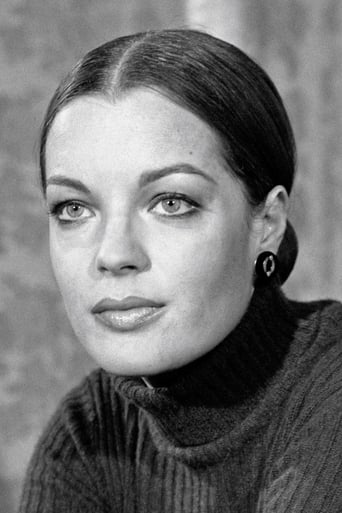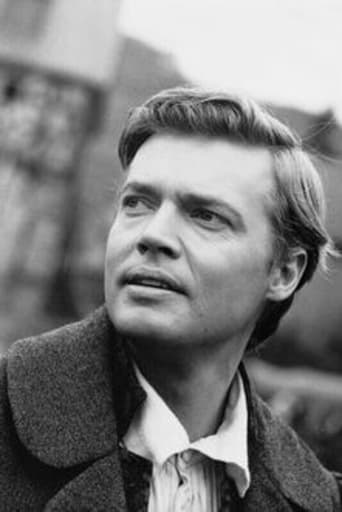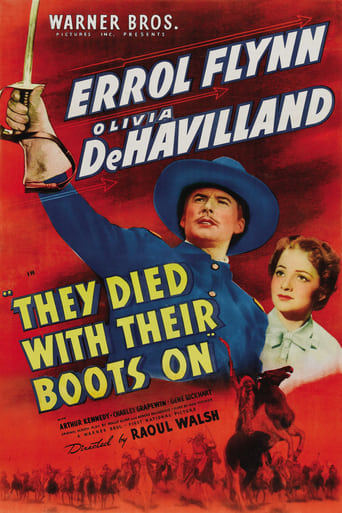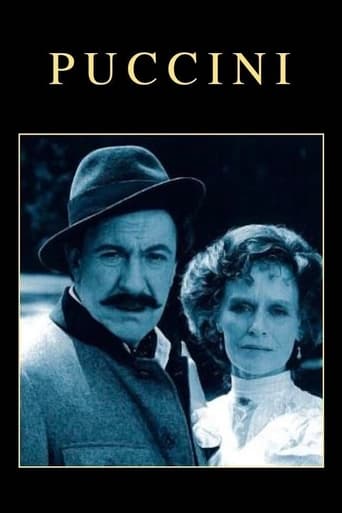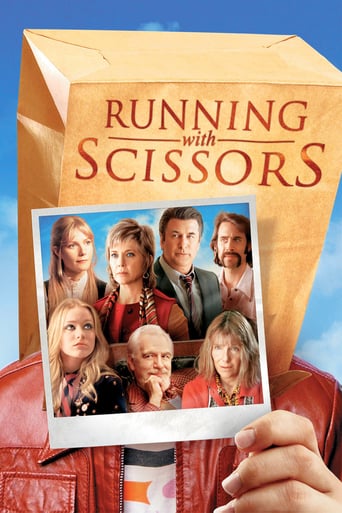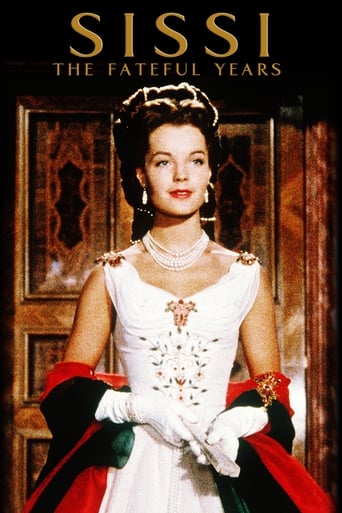
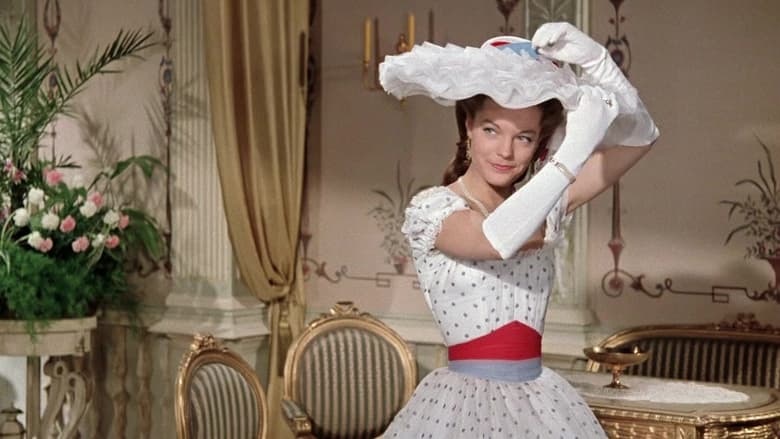
Sissi: The Fateful Years of an Empress (1957)
After a wonderful time in Hungary Sissi falls extremely ill and must retreat to a Mediterranean climate to rest. The young empress’ mother takes her from Austria to recover in Madeira.
Watch Trailer
Cast
Similar titles
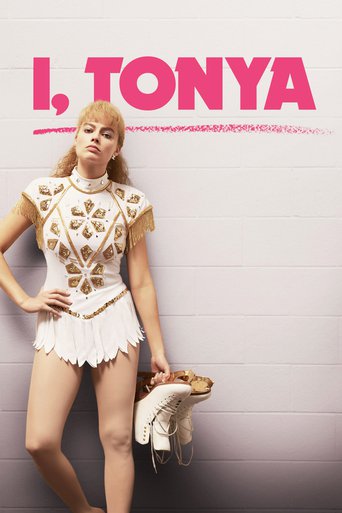
Reviews
Really Surprised!
People are voting emotionally.
The story, direction, characters, and writing/dialogue is akin to taking a tranquilizer shot to the neck, but everything else was so well done.
Exactly the movie you think it is, but not the movie you want it to be.
Pigeons spell out the Empress' nickname. 19-year-old Romy Schneider polishes off the last of the Hungarian resistance to her rule, and heads back to Vienna. However Dread Movie Disease strikes and it is only when she overhears her husband the Emperor saying he cares for nothing but her, that her back stiffens. This gives her the will to go to Madeira (Campania) for her health, but to no avail; it is only when her mother shows up and makes her climb mountains and go to Corfu that she recovers. It's back to Vienna, where it's back to the diplomatic grind.(In reality, the Empress Elisabeth was a health nut who had gyms installed everywhere, and may have been bulimic. However, can't let that interfere with such beautiful nonsense.) Anyway, it's off to northern Italy, where they turn every snub to triumph in glorious Technicolor.My reviews of this and the two earlier movies in this trilogy have been cynical, but that has been impelled by the utterly simple-minded fairy-tale nature of the movies. To look at a serious drama that considers real problems in some fashion commands my respect; to look at a comedy that mocks its subjects, even as it offers us reasons to love them, gives my ironic eye no crevice to slip a knife in. To look at these movies, which attempt to dazzle us with bright colors and easily proved lies, no matter how much I may wish for simple, nostalgic answers, offends my sensibilities, and always has. A sword's stroke may cut a Gordian knot, but it destroys the rope, which is something I understood even as a child. As much as we may wish it, there are no simple answers to complex questions, and the illusion that there was a bright, shining Golden Age exists only in the minds of those who did not have to struggle with the problems of those ages.Certainly Romy Schneider felt this, or something like this. Director Ernst Marischka wanted to make a fourth Sissi movie, but despite being offered a huge salary, Miss Schneider turned him down. She was anxious to get on to other, more interesting work.This movie, like the previous two, is a lovely bit of fluff, full of bright colors, beautiful people in beautiful clothes in beautiful settings, doing things that must have had the folks in Vienna, out for a bit of strudel with some schlag after the show sighing for the good old days. Nowadays, of course, we sigh for that era.
"Sissi - Schicksalsjahre einer Kaiserin" or "Sissi: The Fateful Years of an Empress" is the third and final film from the Sissi trilogy starring Romy Schneider, her mother Magda and Karlheinz Böhm. I watched all 3 films and I must say it should have ended already after the first, or even never have made. It may be an aesthetically pleasing watch most of the time, because costumes, cinematography and art direction are okay, but it's all very pretentious and style over substance. I have no idea why 2 of these 3 films were nominated at the prestigious Cannes Film Festival. Anyway, back to this one here. The writer and director is Oscar nominee Ernst Marischka once again. The film runs for 108 minutes roughly, a couple minutes longer than films 1 and 2. And with all the emotional pain, they included previously, especially in films 2, this one is mostly about actual physical pain for Sissi. It's all tear-jerk stuff, but never feels authentic and her complete recovery out of nowhere is as ridiculous as the constant comments about how she is possibly going to die while she wanders around carelessly in the castle as usual and doesn't even look sick. The same antagonist (the evil mother-in-law) adds nothing new and Böhm's character apparently being totally dependent on his wife's health don't help either in making this a credible tale.Other than this crucial plot point, it is also about Sissi being courted by Graf Andrassy. In reality, there are rumors about the two having a long-lasting affair, maybe him even being the father of one of her children, but in here she blows him off instantly. I really hate it when characters are depicted perfect in terms of character and behavior and it was pretty cringeworthy most of the time. Apart from that, this elaboration (and also many other scenes) make obvious that this cannot be taken seriously as a historic film. Another cringeworthy scene was when Sissi tells her mother that she did not ask her to come because of the long distance and the stressful journey for her mother when she herself was apparently very sick. Still 100% altruist, even if she is dying. Well.. obviously she is not and everybody in the audience knows. Schneiders stunning looks are not enough for me to recommend this movie. The fake harmony alone leaves a very negative note. Only recommended if you enjoyed the first and second movie. I already did not like these either, but if you do, maybe you will appreciate this third film as well. For me, it is a thumbs down.
The last of the three Sissi movies continues with the idealized version of her story. Just like in Disneyland, no one ever ages and all ends well. This third film shows events that probably did happen sometime during her 45 years on the Austrian throne, but by now the overall story can only be called fiction. The second movie ended with the coronation of Sissi and Franz Josef as King and Queen of Hungary. That happened in 1867. By that time, Sissi gave birth to three children - Sophie in 1855, Gisela in 1856, and Rudolf in 1858. Her firstborn Sophie died in 1857. A fourth child, a daughter, was born in 1868. Yet this third film, presumably a continuation of the second film, shows the imperial couple visiting Venice, which happened in 1856, and shows only one child, a girl, who appears to be about 4. So the chronology is obviously all wrong here. While the illness she suffers from in this movie is based on fact, Sissie should have aged in the movie about two decades by the time these events were presented. I gave this movie a relatively low mark because of the many historical inaccuracies and omissions. In spite of these shortcomings, I still enjoyed the movie. This third movie includes some breathtaking scenery of the Mediterranean coastline, and the Venice visits appears to have been shot on location. One almost feels like a part of the crowd. Franz Josef likewise seems to be forever young and is not shown with the facial hair that distinguished him for most of his reign. He already sported the beard and mustache by the time he was crowned King of Hungary in 1867, so he should have had the facial hair already by the end of the second movie and throughout the entire third movie. But that would probably spoil the Prince Charming image the film makers were aiming for. This movie should be viewed more as a fairy tale that is loosely based on the life of the imperial Austrian family. It is not an historically accurate portrayal of their life story.
The third part of Sissi trilogy is made in the same convention as the previous two parts: monumental scenes with a lot of historical inaccuracies, sweetness, and high morality. However, if there is any uniqueness of this part, it is its most tragic content. As a result, Sissi-Schicksalsjahre einer Kaiserin, which can be translated as "the fateful years of the empress", is closest to the historical picture of this person - one of the most tragic empresses and one of the most known figures of the Austrian history.The first half takes place in Hungary. Sissi, the queen of Hungary, stays in a lovely place, Godolo, far from the loneliness of the royal palace in Vienna, and her cruel mother in law, archduchess Sophie. Although she loves her time there, she leaves Hungary when Count Andrassy's love gets stronger. However, there remains one trace in her from the time spent riding horses and relaxing in Godollo. Sissi falls into tuberculosis. She has to leave Vienna for an exotic southern place to change the climate. It is Madeira and Korfu. There are long scenes of her recovering, her mother Ludovika (Magda Schneider) comes to her, to Madeira, and gives her hope to recover. There is a reference of long scenes to the tiring process of recovering. But they are not boring thanks to gorgeous views of the Italian coast.The part is equally classic as the previous ones. Great cast including Romy Schneider, her mother Magda Schneider, and Karlheinz Bohm, still living. Filming locations are also an aspect worth considering. For that time, it was really extraordinary to make the movie on the Amalfi Coast (southern Italy) or Venice. Most scenes of Madeira and Korfu are particularly shot in an idyllic town of Ravello with its wonderful villas, Villa Cimbrone and Villa Rufolo. There is also Paestum with its ancient temples and, of course, Saint Mark's Square in Venice at the end of the movie.The final scene is the most memorable of all. Sissi, having recovered from tuberculosis, travels with Franz Josef to Venice (an anti-Austrian part of the empire). The picture of the imperial gondola embarking near St Mark's Square is strikingly based on the various pictures from the 19th century presenting the imperial visit to this beautiful and unique city. The silence of the crowds is widespread. While the imperial couple walk towards Saint Mark's basilica, Sissi suddenly notices her little daughter whom she could not meet due to her illness. Not caring for the people watching, she runs to her daughter, kisses her and cries out of joy. Someone from the crowd starts to salute and after a few seconds the whole Saint Mark's Square turns into a cheerful place. The people do not shout "VIVA" to adore the empress but the MOTHER. "Blessed are the ones of joyful hearts, for joy comes from God"(one notice: the anthem that is played while the imperial family enters the basilica is not the German anthem but the old Austrian anthem of the same melody "Gott Erhalte, Gott Schutze Unseren Kaiser, Unseres Land")You may have one doubt to this final scene. The story somehow does not end. The imperial couple is in Venice, Sissi is well, happy, and what then? Marischka planned to make the fourth part but Romy Schneider refused. She was fed up with being associated with Sissi. She was an actress and not an empress and that was a good decision. More great films waited for her life career. The role of Sissi in 1957 was not the lat one Romy had. She played Elizabeth of Austria one more time in Visconti's Ludwig almost twenty years later, but this was an entirely different portrayal.Sissi Schickslsjahre einer Kaiserin is a classic, beyond times. Generations to come will watch it as a treasure of the Austrian cinema of the 20th century. FOREVER IN MY FAMILY'S FILM COLLECTION
